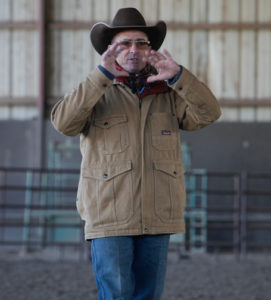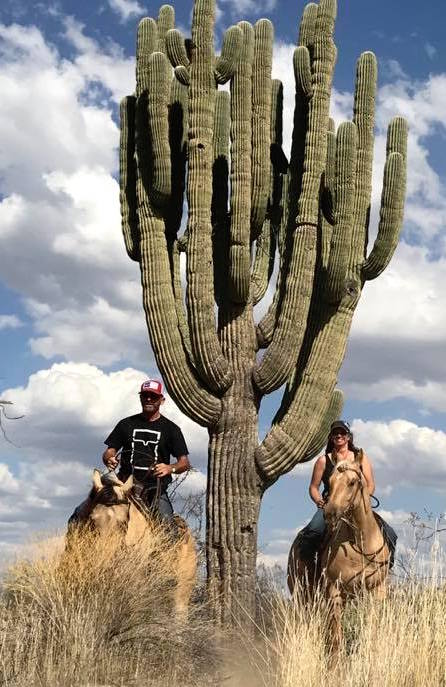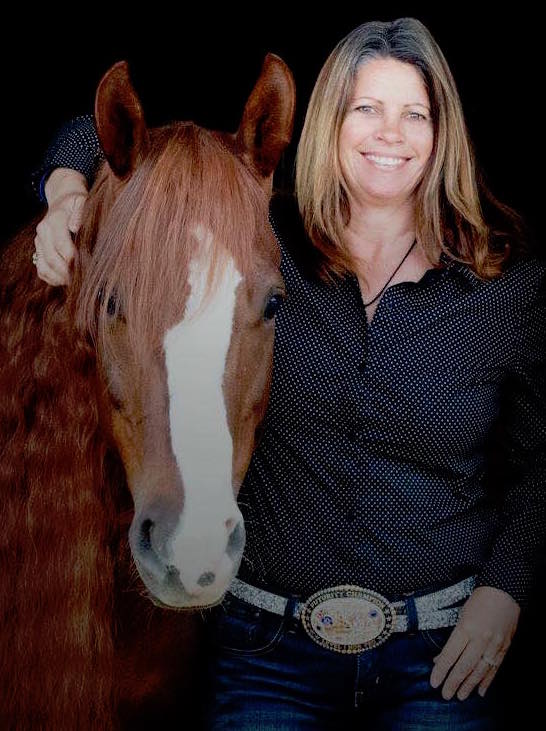 Warwick Schiller introduced himself to me at an event in Paso Robles, California, seven years ago. He came across as smart, friendly, humble, and deeply invested in learning. Those combined qualities are not something you see in every horseman, so I took notice.
Warwick Schiller introduced himself to me at an event in Paso Robles, California, seven years ago. He came across as smart, friendly, humble, and deeply invested in learning. Those combined qualities are not something you see in every horseman, so I took notice.
Since then, Schiller has stayed true to that first impression: ever the student and masterful teacher, always willing to think outside the box and take chances with new ideas. His fan base has increased immensely in the process. He has millions of YouTube viewers and a healthy video subscription base.
This year is itself another fresh idea for Schiller. The Australian-turned-Californian is taking a “node year.” It’s a Japanese concept, he explained. Bamboo plants shoot up quickly, but pause at nodes, thick, strong, reinforcing points in the long skinny stems. 2018 is a sabbatical from his usually intense, international schedule of teaching to the public.

Warwick and Robyn on their road trip in Arizona
Warwick’s been working on Warwick. Like fine horseman before him, he’s learning that a lot of horsemanship isn’t really about horses at all. “It’s about what emanates from you. It’s about sorting yourself out,” said Schiller.
Like most of the Best Horse Practices Summit presenters at last year’s inaugural event, Schiller took time to sit in on other presentations and visit with fellow horsemen.
“I remember listening to Bryan and Randy,” said Schiller of the inspiring evening talk on the Dorrance legacy by Bryan Neubert and Randy Rieman. “And I talked with Martin Black, too. I got to thinking: this horsemanship stuff is really about mindfulness. Randy and Bryan are really spiritual dudes.”
Schiller and his wife, Robyn, recently took a five-week road trip. They traveled with three horses and their living quarters horse trailer, enjoying trail rides and working to qualify for the FEI World Equestrian Games in reining. (Robyn is an accomplished reiner with scores of national accolades to her credit.).
This year, he’s headed to Canada to visit with Jonathan Field, hopes to take in Harry Whitney, Anna Blake, Patrick King, and Elsa Sinclair. He wants to take jumping lessons and ride dressage.
Schiller is coming to believe more and more that it’s all about process, not outcome. He posted this video on “Training like a 10-year old girl” which celebrates the quiet, goalless moments that enrich the horse-human experience.
He describes research and reflection on the Dorrance brothers and thinks they were Buddha-like. “I think it comes from being with animals all the time,” he said. He’s facing some personal stuff, too, and taking cues from folks like Brene Brown who he paraphrases here: “Shame is the scourge of society. Vulnerability is the antidote to shame.”
How does this play out in his horse work?

Talented Robyn Schiller with her favorite mare
He goes more slowly and deliberately and ends up making better progress. When he once taught horses to be obedient, now he’s seeking connection.
“My horses and I both got stuck in this low level loop of not letting down. Not really worried, but not relaxed either,” said Schiller. “Now, between every ask, I’m making sure that I wait for them to come down. That waiting builds connection. They can more readily toggle between the sympathetic and parasympathetic nervous system. It ain’t sexy, but it’s almost like I’ve found the secret of life.”
Kudos, Warwick!
This is a great article and very insightful. I have listened closely to what Martin Black has told me about Tom Dorrance. Tom’s knowledge coincides well with what we know about the horse’s nervous system. We can all pretty much get horses to eventually do what we want but often at the cost of our connection with them. I am especially pleased with this expanding circle of horseman who are or have gone through this deep reevaluation of themselves. My hat goes off to Warwick who is willing to be able to share his personal journey. I have also talked with Bryan and it is more than just going slow, it is giving the horse enough time. West Taylor who trains mustangs off the range now has a new saying “I need to slow down to get there faster”. Amy Skinner wrote a recent impassioned and quite profound article recently about the artificial parameters we place on training with the idea that its 30 or 60 days that makes the horse. The public loves to go to the 3 day colt starting contests and see a rider stand on his colt on the last day cracking a whip. Hopefully we can be open to question what we have always seen done and begin to see that connection is something deeper, more meaningful and it takes the time to allow the horse to allow itself to let go and be able to find that optimum neurochemical state.
ha…I enjoyed Warwick’s presentation at last years summit too. I laughed to myself though when he said using mindfulness with the horses (his new way of going) “isn’t sexy”…..I think the opposite…It IS.
it is sexy…and of course, nature’s way!
I enjoy his training methods very much and am a paid member of his program. I still have many questions and concerns such a a great fear of actual riding. I am similar to the “Ten Year Old Girl Training” in a way, as I spend quality time just enjoying the company of my horses and just “being” with them. On the other hand unlike a ten year old horse crazy girl, I am not fearless when it comes to riding. In fact it has gotten so bad that I no longer ride. My poor trainer is unsure how to help me and so am I.
Thank you for sharing this excellent blog with us. I look forward to your future posts.
Hi Michelle, After three buck offs over several years, I was in a similar state of confidence. Like you I’m doing the “Ten Year Old Girl Training” and Warwick’s Focus for Relaxation exercises and they’ve really helped relax my horses (and me). In the saddle, I’m also working on relaxing me and my horses by using Warwick’s “Basic Focus Exercise Under Saddle”, which is the first video in the Focus for Relaxation series. I’m also doing an exercise I learned in a Buck Brannaman clinic that he calls riding serpentines.
Both exercises will relax your horse and you’ll be more relaxed. You’ll find that your horse becomes lighter and operates with more of a feel. If you feel your horse tense up during a ride, you can do these exercises to calm your horse and yourself without the need for more abrupt maneuvers like disengaging the hindquarters.
Since you’re a paid member of Warwick’s video program, you can watch the Focus for Relaxation videos. If I get a chance tomorrow, I’ll record a video of the serpentine exercise and hopefully it can help build your confidence too. I’ll respond back when the serpentine video is on my website.
When, where is Warwick coming to Canada? ( or near Ontario?)